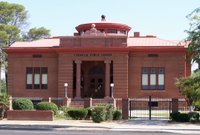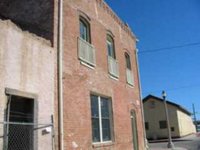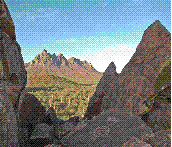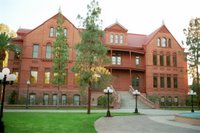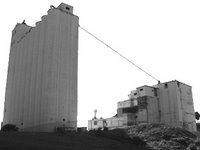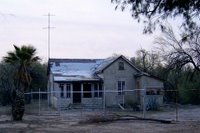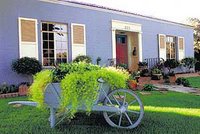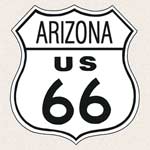 The Environmental Protection Agency, Arizona Department of Environmental Quality, City of Winslow, City of Holbrook, and Navajo County will hold a two-day meeting to explore the opportunities and barriers to redevelopment at underground storage tank sites and old service station sites along historic Route 66. The meeting will take place on January 26, 2006, in Winslow, AZ at the historic La Posada Hotel and on January 27, 2006, in Holbrook, AZ at the Open Class Building (Navajo County Fairgrounds).
The Environmental Protection Agency, Arizona Department of Environmental Quality, City of Winslow, City of Holbrook, and Navajo County will hold a two-day meeting to explore the opportunities and barriers to redevelopment at underground storage tank sites and old service station sites along historic Route 66. The meeting will take place on January 26, 2006, in Winslow, AZ at the historic La Posada Hotel and on January 27, 2006, in Holbrook, AZ at the Open Class Building (Navajo County Fairgrounds).The main objective of the meeting is to explore ways that various agencies and organizations can work with Winslow, Holbrook, and Navajo County to expedite cleanup and promote redevelopment at underground storage tank sites along Route 66. Representatives of agencies/organizations that offer various forms of technical and/or financial assistance that could be used for these projects are encouraged to attend. Property owners and community members will be eager to hear about these opportunities.
Agency/organization representatives are being asked to convey a survey of available resources and provide a brief (up to five minute) presentation about the assistance that their agency/organization offers. In addition, a breakout session is planned to allow community members, property owners, and agency/organization representatives to share ideas. Following this breakout session, a panel discussion and Q & A will be held to allow attendees to offer their views and ask questions.
Since its inception in June 2004, ADEQ's Route 66 Initiative has done an excellent job of identifying, assessing, and cleaning up sites along Route 66, but redevelopment remains slow and few leaking underground storage tank sites are approached with a possible reuse in mind. Your help is needed to identify barriers and opportunities for redevelopment so that surrounding communities may revitalize the Route 66 corridor and preserve the rich heritage that has become synonymous with this nationally treasured highway.
If you are interested in attending, RSVP by Friday, January 7 to Maggie Witt, U.S. EPA Route 66 Project Manager, at 415-972-3370. If you have any questions about the meeting or any of the enclosures, please do not hesitate to call Maggie.


